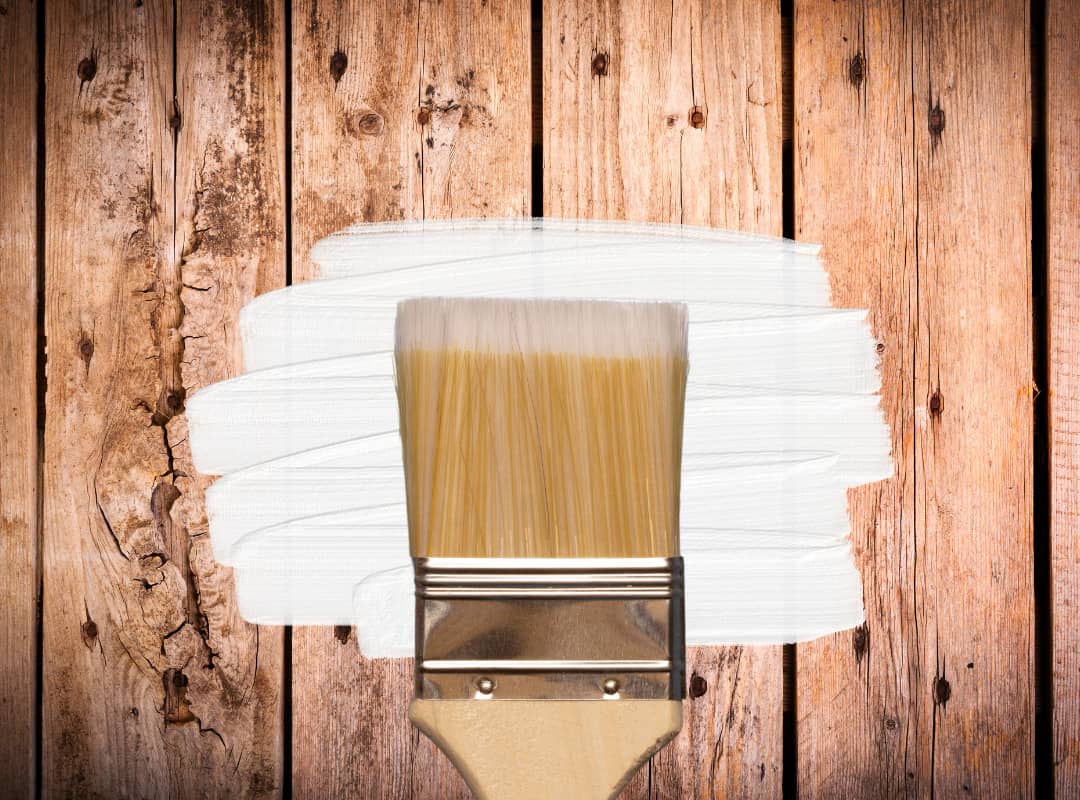The How-to-Guide for Painting Timber Interiors

Timber can be a great accent feature in your home, but too much of it can make your house feel dim, dated and closed in. Removing these features can be costly, but painting timber - whether it be ceiling beams, wall panels, timber veneer or staircases - can be a great way to instantly and more affordably modernise a room while making it feel much more open, and light.
But painting timber isn’t just a case of getting out the paint brush and getting stuck in. To get the best finish possible, and to avoid mistakes that can be costly to fix, you’ll need to do a bit of prep work first.
Prepping interior timber for painting
1. Filling cracks and damaged areas
The first step is to examine the timber for cracks, dings and loose nails. If you find any damaged areas, use a good quality wood filler, then sand it back so the filled surface is smooth and flush with the rest of the timber. If you’re painting timber walls or architraves, you can also fill joins with Selleys No More Gaps.
2. Sanding time
Glossy timber surfaces need to be sanded back with medium grit sandpaper prior to painting, so that the paint has something to adhere to. If you’re working with bare timber, you only need to do a very light sand to roughen up the surface a bit.
3. Cleaning
The next step is to give the timber a good clean to remove any built-up dust and grime, and sugar soap is ideal for this. Vacuum any nooks or crannies around the area, and make sure you thoroughly wipe off any dust left over from sanding.
4. Mask up
Finally, mask up any edges that you don’t want painted, pushing down the edges firmly. It’s important to use good quality masking tape specifically designed for painting, and just as important not to leave it on too long after painting or it may rip the painted edge off. If the paint has dried completely, use a sharp blade or craft knife to score the edge before removing the tape.
Painting interior timber
We strongly recommend using a primer for undercoating the timber, which will give you a better overall finish. This will also help seal the timber. Once undercoated and primed, you can then top coat.
The top coat you choose will come down to your preferred finish, but as a general rule:
- Low sheen paints are the best option for hiding surface imperfections on interior walls and timber features, and are easy to clean.
- Gloss and semi-gloss will give you a much shinier finish, which means they’ll reflect light and are more likely to show imperfections.
Staining or oiling interior timber
As an alternative to painting timber, you can also stain or oil interior features like wooden beams and staircases. This helps seal and protect the wood, while still maintaining the authentic timber look.
If the timber has been painted before, you’ll need to strip the paint first, and then sand it back ready for staining. This is a good way to restore a timber feature that you don’t want to paint but, be warned, it can be time consuming.
Interior timber painting by the experts
Painting timber interiors is a great way to completely freshen up and change the look of a room that’s overwhelmed by wooden features like wall panels, veneer or beams. However, if it’s not done well, you could be looking for a very time-consuming (and pricey) job to strip the paint and start again.
If you’re looking to modernise your home by painting timber, but want a long lasting, professional grade finish, then Kraudelt Painting is here to help. We’ve helped many clients transform their homes’ interiors with paint to give them an updated look that’s lighter and brighter. To breathe new life into your home’s timber finishes, give us a call today for expert advice and service.
